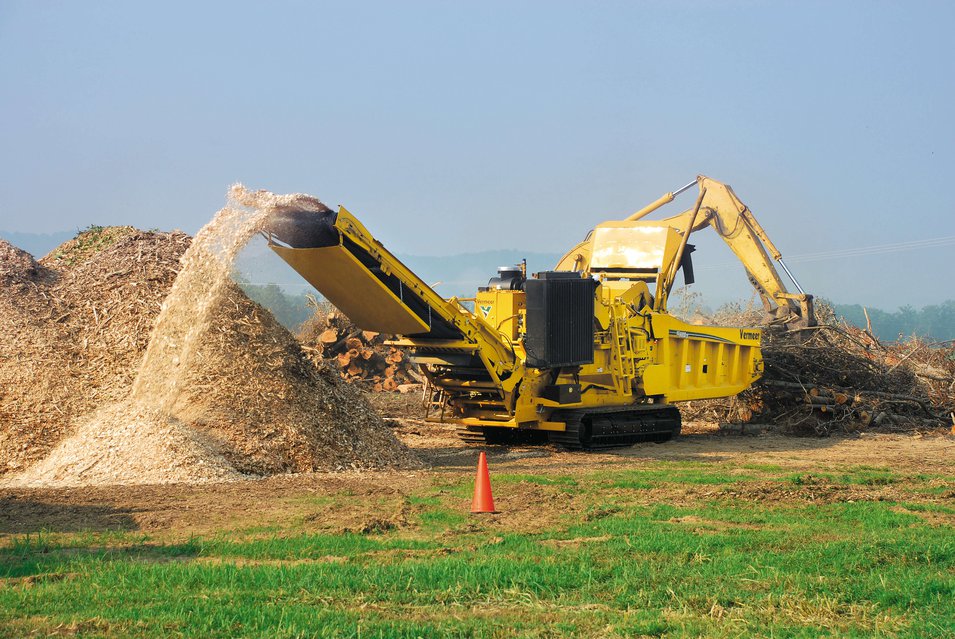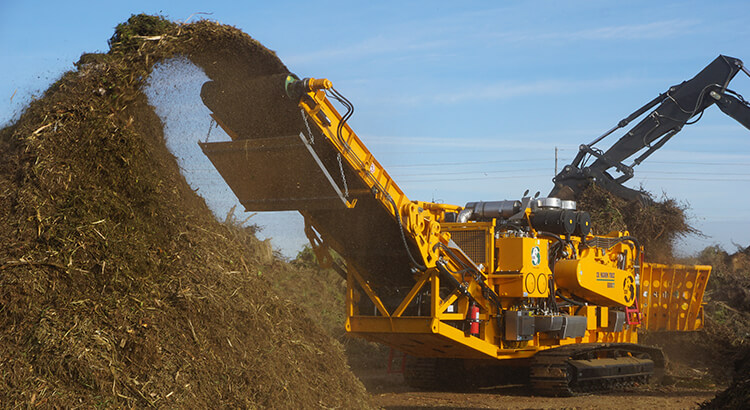Proven Performance: Leading Brands of Horizontal Grinders
Just How a Horizontal Grinder Can Transform Your Recycling Workflow
One such service that has gained significant focus is the straight grinder. The functional processing capacities of a horizontal grinder allow for the processing of a wide array of materials, better boosting its appeal. Just how specifically can a straight grinder change your reusing procedures?

Raised Performance and Productivity
The usage of a straight mill in reusing operations uses numerous benefits in terms of refining rate and material handling. With its powerful grinding device and big feed opening, a straight grinder can process a large array of materials promptly and efficiently.

In addition to processing rate and convenience, a straight mill additionally supplies improved material taking care of abilities. Its large feed opening enables simpler loading of materials, minimizing the demand for manual work and enhancing general efficiency. The grinder's ability to create a regular and uniform output additionally adds to raised performance, as the refined product can be conveniently recycled or sold.
Versatile Handling Capabilities
With its capacity to efficiently process various sorts of recyclable materials, a straight mill provides functional handling capabilities that enhance recycling procedures. This effective maker can dealing with a large array of materials, consisting of wood waste, eco-friendly waste, building and demolition particles, and also asphalt shingles. By efficiently grinding these materials, the straight grinder can transform them into valuable final product such as compost, compost, biomass gas, or also garbage dump cover.
Among the essential benefits of a horizontal grinder is its capability to deal with big volumes of product effortlessly. The maker's high-speed rotor, integrated with its heavy-duty building, allows it to refine big amounts of material promptly and efficiently. This is particularly essential in recycling procedures where a significant amount of material requires to be processed in a short amount of time.
Additionally, straight mills are developed to be very adaptable to various applications. They can be outfitted with numerous screen sizes and arrangements to create various bit sizes and final result. This convenience allows recycling operators to meet the details needs of their markets and consumers, making certain maximum value and bankability of the processed products.
Furthermore, straight grinders are understood for their capability to take care of unpleasant and hard materials. With their durable design and heavy-duty parts, they can easily grind via products that would certainly be challenging for other kinds of tools. This ability makes straight mills a dependable option for processing materials that are hard to manage, such as pallets, railway connections, and tree stumps.
Minimized Waste Disposal Prices
The usage of a horizontal mill in recycling procedures can bring about considerable decreases in waste disposal expenses. Typical garbage disposal methods typically include transporting huge volumes of waste to landfills, which can be environmentally damaging and expensive. By making use of a straight mill, recycling centers can effectively refine waste products on-site, reducing the demand for expensive transport and disposal solutions.
Straight grinders can grinding a variety of waste products, including wood, environment-friendly waste, building and construction and demolition debris, and even specific types of steels - horizontal grinders. By breaking down these products right into smaller sized, a lot more workable dimensions, straight grinders make it easier to separate recyclable components and remove pollutants. This not only improves the total quality of the recycled materials but also decreases the amount of waste that requires to be moved to land fills
In addition to minimizing waste disposal costs, straight grinders likewise supply the possibility for generating revenue. The processed waste materials can be marketed as feedstock for various industries, such as Visit This Link biomass power manufacturing or compost manufacturing. This produces a round economic climate where waste is changed into useful sources, better countering disposal costs and contributing to lasting try this waste monitoring methods.
Environmental Advantages of Recycling
Recycling deals many environmental advantages by lowering and saving natural sources air pollution. One of the most significant benefits of recycling is the preservation of natural deposits. By recycling products such as paper, glass, and steels, we can decrease the demand for resources removed from the planet. This aids to preserve forests, decrease deforestation, and shield beneficial environments. Furthermore, reusing conserves energy contrasted to the production of brand-new products. Reusing aluminum requires only 5% of the energy needed to produce aluminum from raw materials. This reduction in energy consumption equates right into reduced greenhouse gas emissions and assists combat environment change.
Recycling also assists to decrease air and water pollution associated with the removal, processing, and transport of raw materials. By reusing materials, we can lessen the need for harmful mining techniques and limit the launch of toxic chemicals right into the environment.

Improved General Profitability
Carrying out efficient recycling procedures can bring about significant improvements in general profitability for organizations. One vital tool that can considerably boost reusing operations is a straight mill. This effective machine is designed to grind and refine a variety of materials, consisting of wood waste, construction particles, and natural waste. By buying a horizontal grinder, organizations can maximize their recycling processes and achieve greater success.
It permits companies to process a larger quantity of waste materials in a much shorter period of time. This adds value to the recycled products, enabling organizations to command higher rates and generate even more earnings.
Furthermore, a horizontal mill assists lower transportation navigate to these guys costs by lowering the volume of waste products. By grinding the waste right into smaller particles, services can transfer larger quantities in each load, lessening the variety of trips and associated costs. Furthermore, grinding waste products decreases their thickness, allowing for extra effective storage space and use of offered space.
Final Thought
To conclude, a horizontal mill can substantially enhance recycling operations by raising performance and efficiency, supplying functional handling abilities, minimizing waste disposal expenses, and providing environmental benefits. With its ability to grind different products and convert them right into beneficial products, such as compost or biomass fuel, a horizontal grinder can add to enhanced total earnings in reusing services.
Additionally, a horizontal mill can deal with various types of recyclable products, including timber waste, eco-friendly waste, and building and construction debris. By using a straight mill, reusing facilities can effectively refine waste products on-site, minimizing the requirement for pricey transportation and disposal services.
Horizontal grinders are capable of grinding a broad variety of waste materials, consisting of timber, eco-friendly waste, construction and demolition debris, and even particular types of steels. By recycling products such as paper, glass, and steels, we can lower the demand for raw materials extracted from the planet.Moreover, a straight mill helps reduce transport prices by minimizing the quantity of waste products.